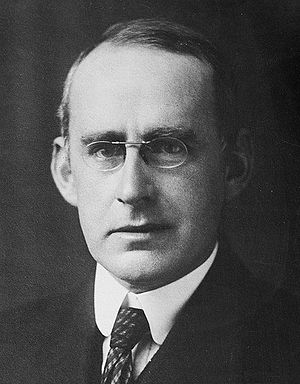Eddington number

In astrophysics, the Eddington number, NEdd, is the number of protons in the observable universe. Eddington originally calculated it as about 1.57×1079; current estimates make it approximately 1080.
The term is named for British astrophysicist Arthur Eddington, who in 1940 was the first to propose a value of NEdd and to explain why this number might be important for physical cosmology and the foundations of physics.
History[]
Eddington argued that the value of the fine-structure constant, α, could be obtained by pure deduction. He related α to the Eddington number, which was his estimate of the number of protons in the universe.[1] This led him in 1929 to conjecture that α was exactly 1/136.[2] He devised a "proof" that NEdd = 136 × 2256, or about 1.57×1079. Other physicists did not adopt this conjecture and did not accept his argument.
In the late 1930s, the best experimental value of the fine-structure constant, α, was approximately 1/137. Eddington then argued, from aesthetic and numerological considerations, that α should be exactly 1/137.
Current estimates of NEdd point to a value of about 1080.[3] These estimates assume that all matter can be taken to be hydrogen and require assumed values for the number and size of galaxies and stars in the universe.[4]
Attempts to find a mathematical basis for this dimensionless constant have continued up to the present time.
During a course of lectures that he delivered in 1938 as Tarner Lecturer at Trinity College, Cambridge, Eddington averred that:
I believe there are 15 747 724 136 275 002 577 605 653 961 181 555 468 044 717 914 527 116 709 366 231 425 076 185 631 031 296 protons in the universe and the same number of electrons.[5]
This large number was soon named the "Eddington number".
Shortly thereafter, improved measurements of α yielded values closer to 1/137, whereupon Eddington changed his "proof" to show that α had to be exactly 1/137.[6]
Recent theory[]
The most precise value of α (obtained experimentally in 2012) is:[7]
Consequently, no reliable source any longer maintains that α is the reciprocal of an integer. Nor does anyone take seriously a mathematical relationship between α and NEdd.
On possible roles for NEdd in contemporary cosmology, especially its connection with large number coincidences, see Barrow (2002) (easier) and Barrow and Tipler (1986: 224–31) (harder).
See also[]
- Eddington–Dirac number
- Eddington number (cycling)
- The Sand Reckoner
- Universe
References[]
- ^ A. S. Eddington (1956). "The Constants of Nature". In J. R. Newman (ed.). The World of Mathematics. 2. Simon & Schuster. pp. 1074–1093.
- ^ Whittaker, Edmund (1945). "Eddington's Theory of the Constants of Nature". The Mathematical Gazette. 29 (286): 137–144. doi:10.2307/3609461. JSTOR 3609461.
- ^ "Notable Properties of Specific Numbers (page 19) at MROB".
- ^ H. Kragh (2003). "Magic Number: A Partial History of the Fine-Structure Constant". Archive for History of Exact Sciences. 57 (5): 395–431. doi:10.1007/s00407-002-0065-7. S2CID 118031104.
- ^ Eddington (1939), lecture titled "The Philosophy of Physical Science". The sentence appears in Chapter XI, "The Physical Universe". Eddington assumes that neutrons are composed of protons and electrons, and his number includes those as well.
- ^ Eddington (1946)
- ^ Tatsumi Aoyama; Masashi Hayakawa; Toichiro Kinoshita; Makiko Nio (2012). "Tenth-Order QED Contribution to the Electron g-2 and an Improved Value of the Fine Structure Constant". Physical Review Letters. 109 (11): 111807. arXiv:1205.5368. Bibcode:2012PhRvL.109k1807A. doi:10.1103/PhysRevLett.109.111807. PMID 23005618. S2CID 14712017.
Bibliography[]
- John D. Barrow (2002). The Constants of Nature from Alpha to Omega: The Numbers That Encode the Deepest Secrets of the Universe. Pantheon Books. ISBN 978-0-375-42221-8.
- John D. Barrow & Frank J. Tipler (1986). The Anthropic Cosmological Principle. London: Oxford University Press.
- Dingle, H. (1954). The Sources of Eddington's Philosophy. London: Cambridge University Press.
- Arthur Eddington (1928). The Nature of the Physical World. London: Cambridge University Press.
- -------- (1935). New Pathways in Science. London: Cambridge University Press.CS1 maint: numeric names: authors list (link)
- -------- (1939). The Philosophy of Physical Science. London: Cambridge University Press.CS1 maint: numeric names: authors list (link)
- -------- (1946). Fundamental Theory. London: Cambridge University Press.CS1 maint: numeric names: authors list (link)
- Kilmister, C.W. & Tupper, B.O.J. (1962). Eddington's Statistical Theory. London: Oxford University Press.CS1 maint: multiple names: authors list (link)
- Slater, N.B. (1957). Development and Meaning in Eddington's Fundamental Theory. London: Cambridge University Press.
- Whittaker, E.T. (1951). Eddington's Principle in the Philosophy of Science. London: Cambridge University Press.
- -------- (1958). From Euclid to Eddington. New York: Dover.CS1 maint: numeric names: authors list (link)
- Numerology
- Astrophysics
- Physical cosmology
